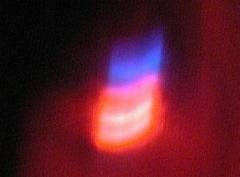soberguy
Brilliant_Rock
- Joined
- Mar 25, 2009
- Messages
- 650
Ok... I have done this on every ruby I have (around 50), and in every store I've been in for the last year'sh. Hold the ruby up to a bright light (I think incandescent works best). You should see distinctly red/pink/blue in the refracted light passing through the stone. Please note I am NOT a gemologist or geologist, so my terms may be mistaken lol! If you see red/orange (in my experience after 100's and 100's of dollars in tests...), you have a "lead glass" filled ruby. This will NOT determine natural origin! Synthetic rubies react the same. Just an interesting thing I noticed after seeing some "fine" rubies in a certain store of GREAT repute that has been discussed on this very forum. Just because something has been certified natural does NOT mean it hasn't undergone extensive treatment... Even in high end stores. BE CAREFUL! It's a wretched jungle out there for colored stone fiends! Read the fine print regarding treatments allowed.
This test also will not determine traditional heating, as I have several heated/unheated examples that react the same to this test, red/pink/blue. Not a single one of my rubies that is natural and NON filled show anything but those colors. All of the rubies that tested filled with a foreign substance do NOT show red/pink/blue, but red/orange.
Just an interesting thing! Hope you are all well!
This test also will not determine traditional heating, as I have several heated/unheated examples that react the same to this test, red/pink/blue. Not a single one of my rubies that is natural and NON filled show anything but those colors. All of the rubies that tested filled with a foreign substance do NOT show red/pink/blue, but red/orange.
Just an interesting thing! Hope you are all well!




300x240.png)